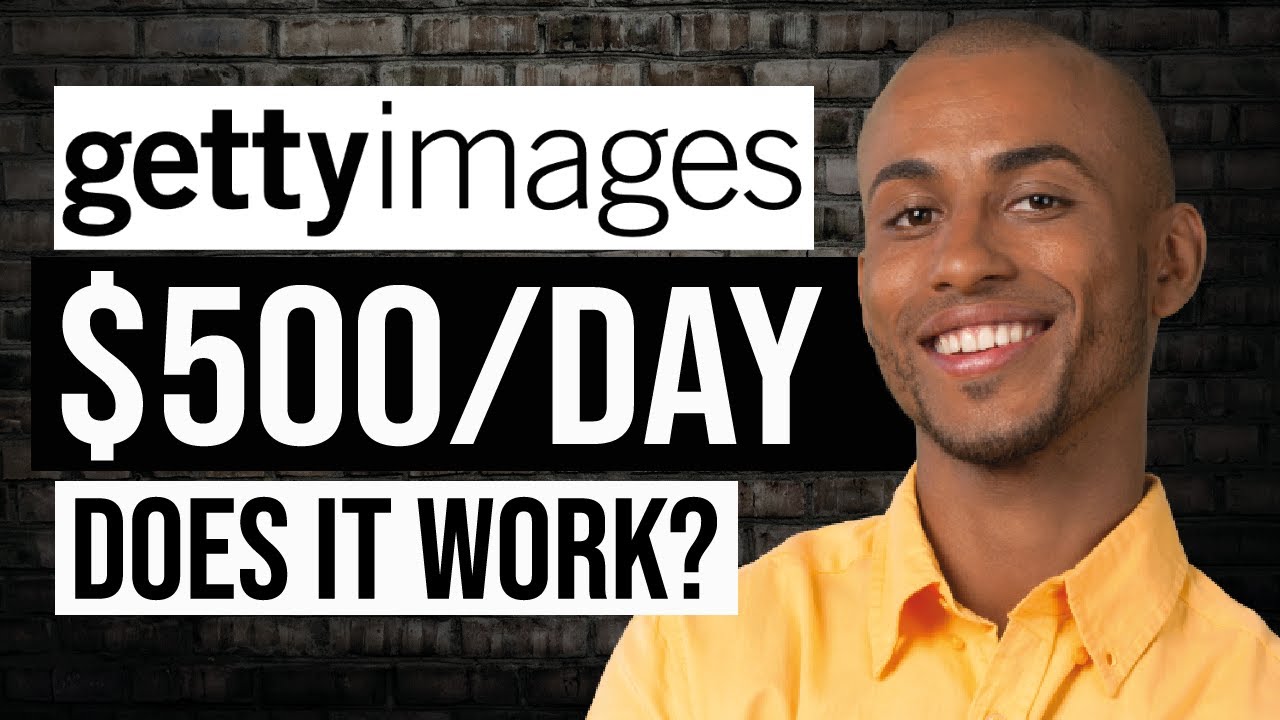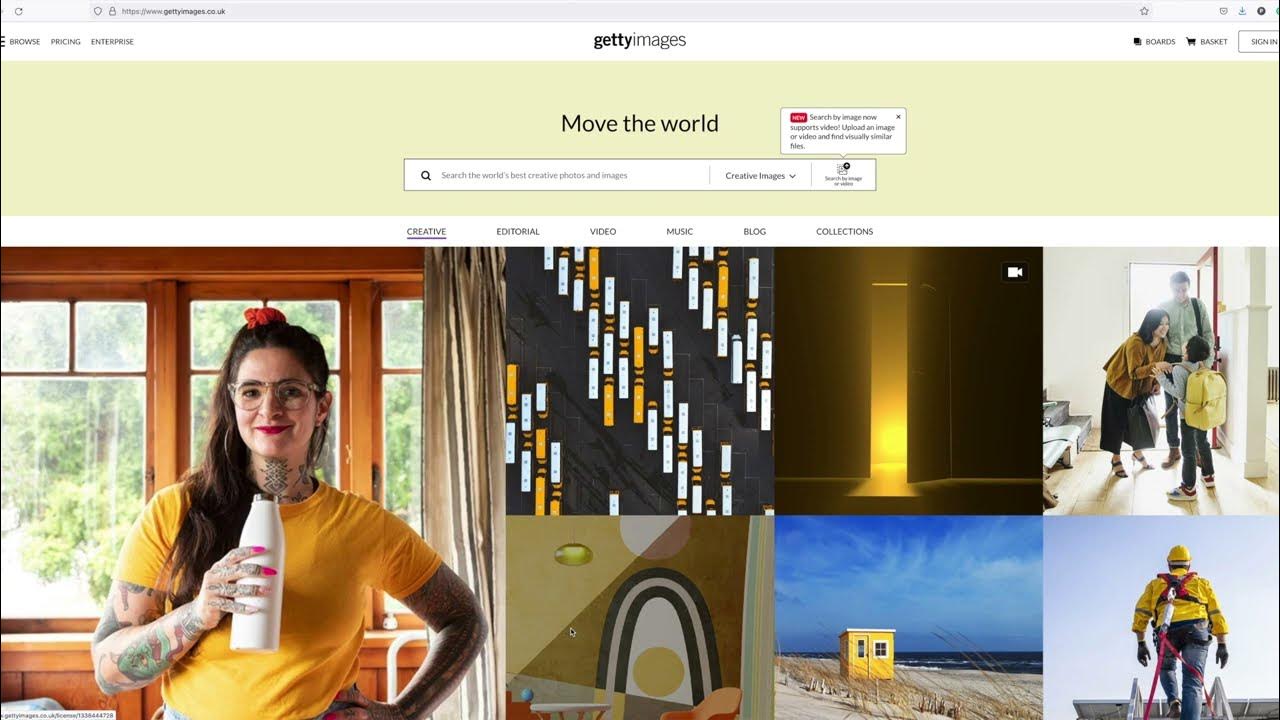If you're a photographer, videographer, or illustrator, Getty Images offers a fantastic avenue to monetize your creative work. Established in 1995, Getty Images is a leading visual content provider that connects creators with businesses needing high-quality images and footage. With millions of visitors each month, it provides a huge platform for your work to be seen and purchased. In this guide, we’ll dive into how you can get paid for your contributions, including the payments structure and how you can maximize your earnings. Let’s explore the exciting opportunities that await!
Understanding Getty Images Payment Structure

The payment structure at Getty Images may seem a bit complex at first, but once you break it down, it’s quite manageable. Here are the key components you need to understand:
1. Types of Licenses:
- Royalty-Free (RF): Customers pay a one-time fee to use the image without paying ongoing royalties. You receive a percentage of this fee.
- Rights Managed (RM): Prices vary based on the specific use of the image. Contributors earn a higher percentage on RM sales.
2. Commission Rates:
Your earnings depend on the licensing type, but generally, Getty Images offers commission splits for contributors. Here’s a simplified breakdown:
| License Type | Typical Commission Rate |
|---|---|
| Royalty-Free | 20%-45% |
| Rights Managed | 25%-35% |
3. Payment Models:
Getty Images uses two primary payment models:
- Pay-Per-Download: You earn money each time someone downloads your content. This is common for royalty-free images.
- Subscription Model: When a customer subscribes to Getty Images, they can download a certain number of images per month. As a contributor, you earn a percentage based on the number of downloads during that period.
4. Payout Thresholds and Frequency:
Getty has a payout threshold, which means you must reach a certain amount before you receive your earnings. This threshold varies but is typically around $100. Once you hit that mark, Getty Images issues payments monthly. They offer payment via various methods like bank transfer or PayPal, making it convenient for you.
5. Getting Started:
To ensure you maximize your earnings, focus on:
- Creating high-quality, unique content that fills gaps in the marketplace.
- Utilizing trending keywords and subjects to increase visibility.
- Regularly submitting new content to keep your portfolio fresh and engaging.
In summary, Getty Images provides a structured way to get paid for your creative work. By understanding different license types, commission rates, and payment models, you can strategically position yourself to earn more. The key is to produce engaging, high-quality content and stay active in the marketplace. Happy shooting!
Also Read This: How to Purchase iStock Images for Your Sketch Projects
3. How to Become a Contributor on Getty Images

If you're looking to share your photography or artwork with the world, becoming a contributor on Getty Images is a fantastic opportunity. The good news is that the process is fairly straightforward! Here’s how you can get started:
Step 1: Create an Account
The first thing you’ll need to do is register for an account on the Getty Images website. This typically involves submitting your email address and creating a password. Make sure to choose a username that reflects your brand or style as a creator.
Step 2: Submit Your Portfolio
Once you have your account, you’ll need to submit a portfolio of your work. Think of this step as your chance to shine!
- Choose your best pieces: Select around 10-15 of your best images that showcase your unique style and creativity.
- Follow the guidelines: Getty has specific requirements for file types, sizes, and quality, so make sure you adhere to those to increase your chances of approval.
- Add descriptions: Provide detailed descriptions for your images, incorporating keywords that will help potential buyers find your work.
Step 3: Get Approved
After submitting your portfolio, it might take a little time for the Getty team to review your work. If you receive an acceptance email, congratulations! You’re now a contributor. If not, don’t be discouraged—take the feedback given and work to improve your submissions.
Step 4: Upload and Tag Your Work
Once accepted, you can begin uploading your images. Properly tagging your images is critical for visibility on the platform. Here’s how to do it:
- Choose relevant keywords: Think about what potential buyers might search for.
- Consider trends: Stay updated on current trends in the stock imagery market to better understand what buyers are looking for.
Step 5: Read and Understand the Contract
Before you start earning, it’s vital to understand the terms of the agreement with Getty Images. Familiarize yourself with:
- The different licenses they offer.
- The commission structure.
- Terms surrounding exclusivity, if applicable.
And there you have it! With these straightforward steps, you’re on your way to becoming a Getty Images contributor!
Also Read This: How Many Photos Does Getty Images Have: An Overview of Getty's Vast Image Library
4. Maximizing Your Earnings with Getty Images

Now that you're a contributor, let’s talk about how to maximize your earnings on Getty Images. The key is to not just upload images, but to strategically curate your portfolio and market your work effectively. Here are some tips to boost your income:
1. Understand Pricing and Licensing
Getty Images offers various pricing structures based on licensing. Familiarize yourself with:
- Royalty-free licenses: Images are sold at a flat fee and can be used multiple times by buyers.
- Rights-managed licenses: Pricing depends on how the image will be used (e.g., duration, geography).
By understanding these options, you can better position your images to buyers and earn accordingly.
2. Focus on Quality Over Quantity
It might be tempting to upload as many images as possible, but high-quality images that cater to market demands will yield better results. Here are some tactics:
- Invest in good equipment or rent quality cameras.
- Learn about lighting and composition to ensure your images stand out.
3. Embrace Popular Trends
Staying current on photography trends can result in selling more images. Consider these pointers:
- Research popular themes and styles that are in demand.
- Participate in social media groups focused on stock photography.
- Follow industry leaders for inspiration and insight.
4. Leverage Social Media
Promoting your Getty Images portfolio on social media platforms can drive traffic and increase the visibility of your work. Here’s how:
- Share sneak peeks of your photos on Instagram, Facebook, or Twitter.
- Engage with your audience by responding to comments and sharing stories about your creative process.
5. Analyze and Adapt
Take advantage of Getty’s analytics tools to see how your images are performing. This data can give you insights into:
- What types of images are selling well.
- Which keywords are driving traffic.
- Areas where you can improve or change your approach.
By applying these strategies, you should see a noticeable improvement in your earnings on Getty Images. Remember, dedication and creativity are your best allies in this journey!
Also Read This: How Getty Decides Which Images to Buy
5. Payment Process: How and When You Get Paid
So, you’ve uploaded your stunning images to Getty Images, and you’re excited to start seeing some earnings roll in. But how does the payment process actually work? Here’s a breakdown of what you can expect when it comes to getting paid by Getty Images.
First off, the payment structure at Getty is fairly straightforward. Generally, contributors earn a commission based on the sales of their images. The commission rate can vary depending on factors like the license type or the exclusivity of your content. Typically, you might see commission rates range from 15% to 45%. It’s essential to understand how these percentages are calculated to have realistic expectations.
Now, let’s talk about how and when you'll see those payments hit your account. Getty Images offers a couple of options for receiving payments:
- PayPal: A fast and convenient way to receive funds, PayPal payments are usually processed monthly.
- Wire Transfer: This option might be better suited for larger sums and entails a bit more waiting time, usually around 30 days after the end of the month.
Getty Images typically pays out earnings about 30 days after the end of the calendar month in which the sales occurred. For example, if someone buys your image in January, you can expect to receive your earnings by the end of February.
One important tip to keep in mind: make sure all your payment information is correctly set up in your contributor account. This step can save you from unnecessary delays. Also, keep an eye on your earnings trend in your contributor dashboard; it can offer valuable insights into which images are performing well and help you adjust your strategy accordingly.
Also Read This: How to Find Free Images on Getty
6. Tips for a Successful Experience with Getty Images
Now that you have the basics down, let’s discuss some actionable tips to ensure your experience with Getty Images is a successful one. Whether you’re just starting or looking to boost your existing portfolio, these strategies can help set you apart.
1. Focus on Quality: It’s no secret that quality matters in photography. Ensure your images are high resolution, well-composed, and creatively shot. Buyers are drawn to striking images, so invest time in perfecting your craft.
2. Understand Licensing: Familiarize yourself with the different licensing options offered on Getty Images. Knowing the difference between rights-managed and royalty-free licensing can help you price your images better and attract the right customers.
3. Use Keywords Wisely: When uploading your images, appropriate tagging is crucial. Use relevant keywords that potential buyers might search for—the more accurate your tags, the easier it will be for your images to be discovered.
4. Stay Updated: The world of stock photography is ever-evolving. Keep an eye on market trends, seasonal changes, and current events. Adapting your portfolio to include relevant topics can greatly increase your chances of a sale.
5. Promote Your Work: Don’t solely rely on Getty Images for visibility. Utilize social media platforms like Instagram, Pinterest, or even a personal blog to showcase your work, driving traffic to your Getty portfolio.
6. Engage with the Community: Connect with other photographers and contributors in forums or social media groups. Sharing experiences and tips can provide you with new perspectives and help you grow.
By implementing these strategies, you can maximize your potential for success with Getty Images. Remember, the journey may take time, but with dedication and creativity, you can build a rewarding experience as a contributor!
Conclusion and Next Steps for Aspiring Contributors
In conclusion, getting paid by Getty Images is an exciting opportunity for photographers and creatives looking to monetize their work. By understanding the submission process and payment guidelines, you can increase your chances of success. Here are some key takeaways and next steps to consider:
- Research and Understand Licensing: Familiarize yourself with the different types of licenses offered by Getty Images to better align your work with their needs.
- Create High-Quality Content: Focus on capturing and curating images that meet high standards and appeal to a broad audience.
- Optimize Your Portfolio: Regularly update your portfolio on the Getty Images platform to showcase your best work and diversify your offerings.
- Stay Informed: Keep up with industry trends, popular themes, and seasonal content strategies to tailor your submissions accordingly.
To maximize your earning potential, consider leveraging social media to promote your Getty Images portfolio, engage with audiences, and showcase your unique style. Additionally, participate in workshops and networking events to continuously refine your skills and learn from others in the industry.
By taking these actionable steps and putting in consistent effort, aspiring contributors can pave their way to success and enjoy the rewards of sharing their creativity with the world.
 admin
admin








